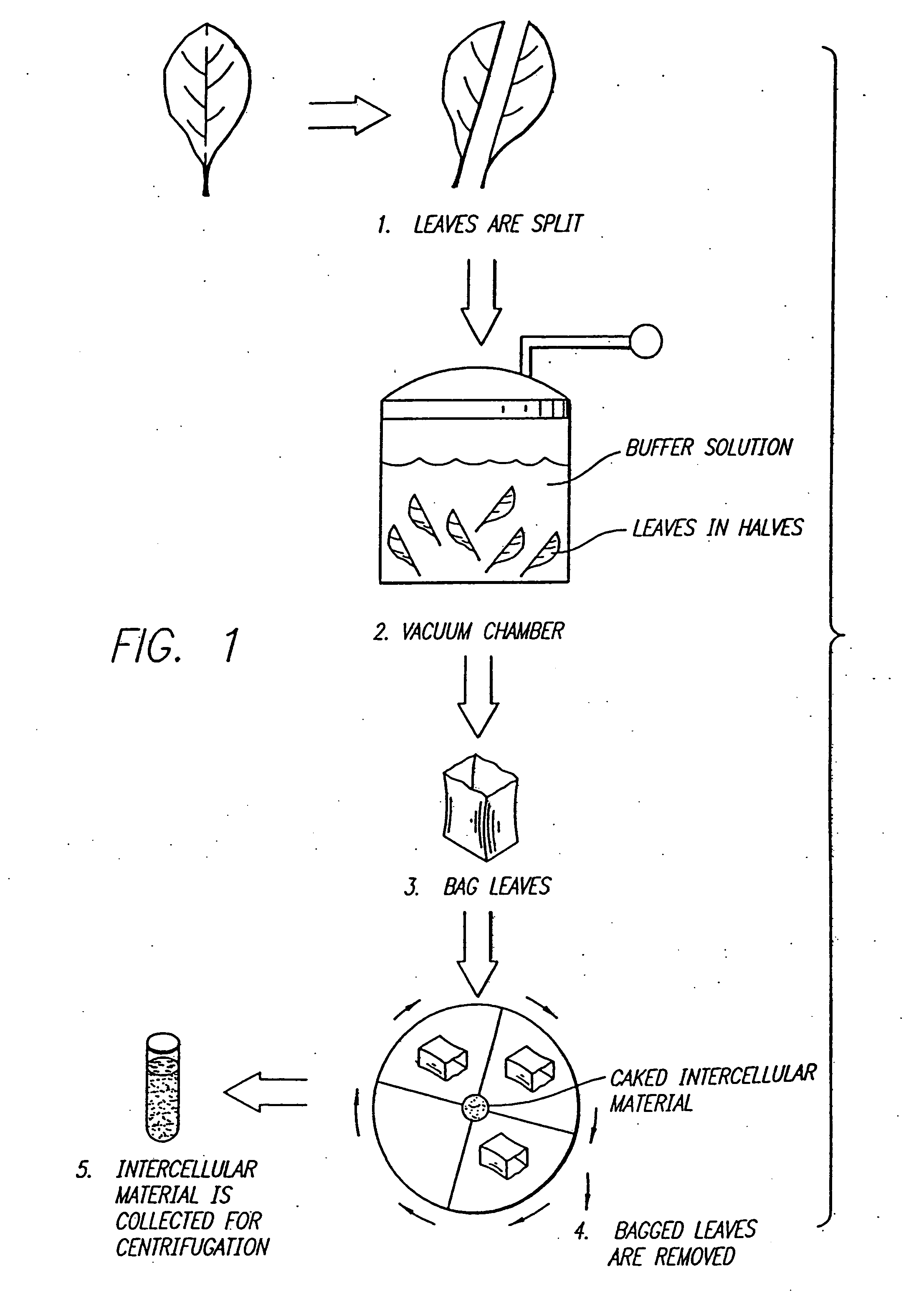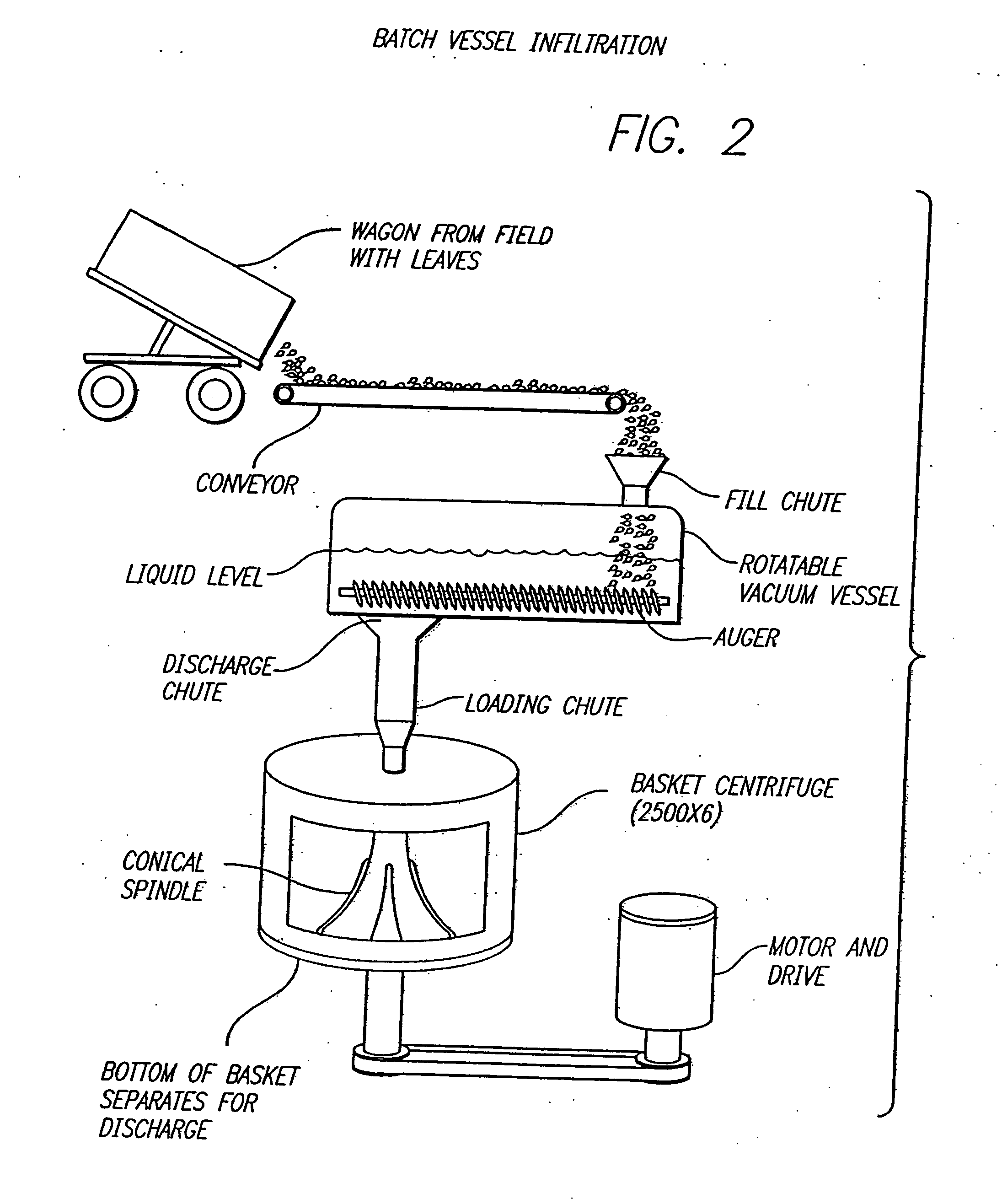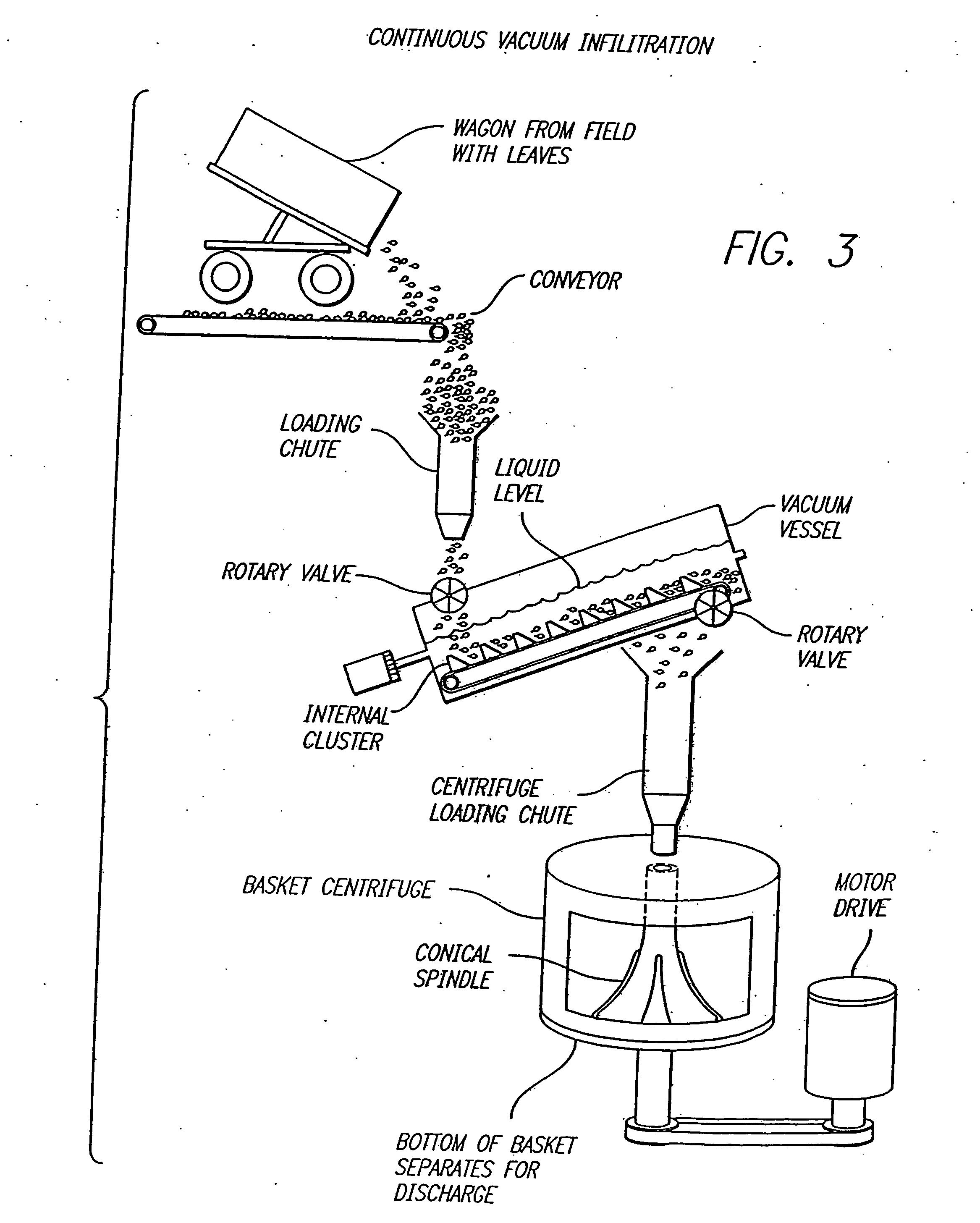Method for recovering proteins from the interstitial fluid of plant tissues
a technology of plant tissues and interstitial fluid, which is applied in the field of protein production and purification, can solve the problems of formidable purification problems, undesirable increased cellular lysis, and exposure to a hostile chemical environmen
- Summary
- Abstract
- Description
- Claims
- Application Information
AI Technical Summary
Benefits of technology
Problems solved by technology
Method used
Image
Examples
example 1
Extraction of α-Trichosanthin Protein
α-Trichosanthin (α-TCS) is a eukaryote ribosome-inactivating enzyme that cleaves an N-glycosidic bond in 28S rRNA. α-TCS, as well as other ribosome-inactivating proteins and conjugates are being evaluated as therapeutics for cell-directed death. In previous work we demonstrated that plants transfected with a proprietary RNA viral vector produce recombinant α-TCS to 2% of the total soluble leaf protein with high fidelity (Kumagai et al. PNAS 90:427-430 (1993)).
Leaves from plants transfected with the vector TB2 (ATCC Deposit No. 75280) were removed at the petiole and slit down the midrib into two equal halves. To obtain a total cellular homogenate, one group of half-leaves was ground in the presence of 4 volumes of S detergent extraction buffer (100 mM potassium phosphate pH 6.5 mM EDTA, 10 mM, α-mercaptoethanol and 0.5% w / v sodium taurocholate) with a mortar and pestle after freezing the tissue in liquid nitrogen. To recover the interstitial fl...
example 2
Amylase (AMY) is an important industrial enzyme used to degrade starch. Leaves from plants transfected with the vector TT01A 103L were removed at the petiole and slit down the midrib into two equal halves. The plasmid map of TT01A 103L is shown in FIG. 4. The viral cDNA sequence of plasmid TT01A 103L is shown in FIG. 5. To obtain a total cellular homogenate, one group of half-leaves was ground in the presence of 4 volumes of detergent extraction buffer (100 mM potassium phosphate pH6.5, 5 mM EDTA, 10 mM, α-mercaptoethanol and 0.5% w / v sodium taurocholate) with a mortar and pestle after freezing the tissue in liquid nitrogen. To recover the interstitial fluid (IF), the same enzyme extraction buffer was infiltrated into the opposing group of half-leaves by submerging the tissue and pumping a moderate vacuum (500 mm Hg). After draining off excess buffer, the undisrupted half-leaves were rolled gently in parafilm, placed in disposable tubes and the interst...
example 3
Extraction of Glucocerebrosidase Protein
Glucocerebrosidase (GCB), either derived from human placental tissue or a recombinant form from Chinese hamster ovary cells (CHO), is presently used in an effective but costly treatment of the heritable metabolic storage disorder known as Gaucher disease. We combined a dual promoter from Cauliflower Mosaic Virus (35S), a translational enhancer from Tobacco Etch Virus and a polyadenylation region from the nopaline synthetase gene of Agrobacterium tumaciens with the native human GCB cDNA to create plasmid pBSG638. These expression elements are widely used to provide the highest possible constitutive expression of nuclear-encoded genes in plants.
Using a standard Agrobacterium-mediated transformation method, we regenerated 93 independent kanamycin-resistant transformants from leaf discs of four different tobacco cultivars (the TO generation). In Western blots of total protein extracts, cross-reacting antigen was detected in 46 of these TO indi...
PUM
| Property | Measurement | Unit |
|---|---|---|
| vacuum pressure | aaaaa | aaaaa |
| vacuum pressure | aaaaa | aaaaa |
| vacuum pressure | aaaaa | aaaaa |
Abstract
Description
Claims
Application Information
 Login to View More
Login to View More - R&D
- Intellectual Property
- Life Sciences
- Materials
- Tech Scout
- Unparalleled Data Quality
- Higher Quality Content
- 60% Fewer Hallucinations
Browse by: Latest US Patents, China's latest patents, Technical Efficacy Thesaurus, Application Domain, Technology Topic, Popular Technical Reports.
© 2025 PatSnap. All rights reserved.Legal|Privacy policy|Modern Slavery Act Transparency Statement|Sitemap|About US| Contact US: help@patsnap.com



